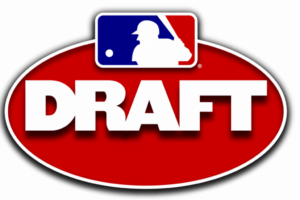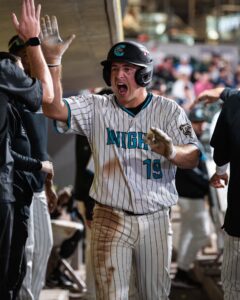The Top Five Prospects: What could go Wrong?
It’s trade deadline day in major league baseball, the year is 2020 and gasp… the White Sox are sellers. Ok, we’ve all had that dream (well maybe not that dream) but I’m confident that the chance the rebuild doesn’t work out has crossed the minds of all White Sox fans. Anyone who’s been a baseball fan for more than five minutes knows that can’t-miss prospects often end up doing just that. This article will examine the reasons some of the White Sox current Top Five prospects could leave us all wondering what might have been. You’ve been warned, read on if you’ve got the nerve.
Eloy Jimenez
It’s difficult to find reasons that Jimenez won’t be a solid major league player. A recent article by James Fegan in The Athletic embarked on a search for holes in his offensive game and netted zero. Eloy’s spray chart provides hard evidence that he can’t be neutralized by an extreme defensive shift. He does have some open questions regarding his defense, but that won’t keep him from making an impact at the major league level. Criticizing Eloy for his defense is about as relevant as complaining about Tom Brady’s inability to take off and run downfield.
The most likely scenario in which Eloy disappoints is he turns out to be more Carlos Lee than Miguel Cabrera. He’s been compared to both although the former may have been Theo Epstein’s way of convincing his fan base that he didn’t trade away a future MVP. While the latter may a bit over the moon, the other comp tossed around has been Giancarlo Stanton. Any complaints there? Ok, you in the back? Oh yeah, the bathroom is down the hall to the right, you had me concerned for a second.
About the only thing we haven’t seen from Jimenez is the ability to make adjustments. All hitters must be able to do this as pitchers, coaches, and scouts will inevitably put together a book on them. This may not completely shut him down, but it will impact his effectiveness resulting in frustration. We’ve all seen hitters press and try to pull the ball when shooting it to right for a single is the only real option. How he handles these types of situations will ultimately determine what type of player he is going to be at the MLB level.
Michael Kopech
Think guys with 100mph fastballs can’t miss? Then you must’ve forgotten about David Aardsma, the fireballer who played for eight teams in his nine-year career including pitching 32 innings for the White Sox in 2007. He did have a couple good years as a closer with Seattle but spent most of his major league career as a middle reliever.
The White Sox are hoping for Kopech to have more in common with Justin Verlander than an uncannily similar delivery. He’s developing the secondary pitches necessary to become a perennial Cy Young candidate. With a devastating slider and solid changeup, he has the repertoire to make it a reality. He also throws a two-seamer, which doubles as a tool to refine his change-up. Overthrowing it will result in what Hawk Harrelson refers to as a 57 footer, requiring him to slow things down to get it over the plate. As expected with a young player with the capability to test the limits of a radar gun, the tendency to overthrow has resulted in some control issues. He put most of these concerns to rest with a dazzling 2017 campaign at Double-A Birmingham and Triple-A Charlotte, but we’ve seen him be wild to the point of ineffectiveness on a couple occasions this spring. Like Jimenez, the inability to conquer the mental part of the game will determine success or failure for the young right-hander.

Luis Robert
Before a thumb injury derailed his Cactus League season, Luis Robert’s stellar play was the number one topic this spring. Such a small sample still makes him the biggest unknown in the Top Five. He’s impressed in the handful of games he’s played stateside, but no real conclusions can be drawn regarding his ability to earn the jaw-dropping signing bonus he signed last May. This makes it hard to discuss any specifics on what may hold him back from becoming a standout MLB player.
Off the field, there’s the adjustment to life in the U.S. Early in Spring Training, he’s had plenty of support from fellow Cubans Yoan Moncada and Jose Abreu along with Eloy Jimenez and Micker Adolfo. But Moncada and Abreu won’t be around once the season starts and it’s unlikely Robert will be joining Jimenez at Double-A, so he’ll be more on his own when the regular season gets underway. Still, the White Sox understand this and are doing everything necessary to make sure he’s got a support system in place to ease him into life in the USA.
So while there’s plenty that could go wrong, the early returns show the hype is justified.
Alec Hansen
Another plus arm with a blazing fastball that regularly hits 94-97 and can reach 99 coupled with an 84-88 MPH slider earn Hansen this lofty ranking. His tertiary pitches (curveball and changeup) fall into the average range. If there’s anything Hansen has struggled with it has been his control, which caused him to fall in the 2016 draft. These concerns have failed to manifest themselves in professional ball as his aggregate WHIP across his minor league career is a dazzling 1.07. He’s walked 71 batters in 196 career minor league innings while allowing 138 hits and striking out a mind-boggling 272 with a paltry batting average against of .195.
His listed 6’7″ frame (more likely he’s a couple inches taller) makes him slow to the plate, which has caused issues with the running game, but we’ve seen notable pitchers struggle with that and sustain success over the course of a lengthy major league career. Some scouts don’t like pitchers of his height, but there was a guy named Randy Johnson who didn’t seem to have an issue with that. Unless he starts to struggle with his control issues again, the only open question seems to be how he’ll do at higher levels of the minors having pitched only 2 games at Double-A last year.
Zack Collins
Collins earned his high ranking and top 10 draft status because of his bat. While his average may be a bit low, his 17 home runs and 76 walks against 118 strikeouts earned him a promotion to Double-A late in 2017. He’s picked up his defense to the point where he could be a major league capable player, but catcher is the one position where teams put a premium on defense. Zack is likely the highest failure risk among the top five, but only insofar as failure means not reaching full value.
Unlike the other players on this list, Collins faces some solid internal competition. Seby Zavala has rocketed up the prospect rankings rising 11 spots to number 16 on our preseason list. His 21 home runs between low and high A last season led the system. He has shown positives and negatives defensively just like Collins, although like any player in the low minors he’s still in the development mode. Then there is Evan Skoug, A left-handed hitter with an abundance of power. The 7th round pick out of TCU has earned praise from both internal and external sources. Like the other catching prospects his defense is suspect, but big bats from the left side tend to find their way onto major league rosters. If the talk about him becomes a reality he could become a serious challenger.
Questions about his catching ability are not necessarily a barrier to Collins becoming a successful major league player. A position switch is a possibility if he can’t become an above-average receiver, but that does somewhat diminish his overall value. Everyone baseball fan old and new knows if you can hit, teams will find a place for you to play. So with Collins in addition to the if and when, he adds the questions of where. But odds are it’ll be somewhere.
Scary Stuff
Like most nightmares, this one loses its punch after getting some distance from it. While each of these players has some flaws that could prevent them from reaching full potential, the biggest concern would appear to be the ever-present threat of injury. This spring we’ve already seen two other prospects (Jake Burger, Micker Adolfo) in our top 10 go down with injuries that will limit them in 2018. And after a couple of injury scares, Luis Robert is out for up to ten weeks. Now that’s the stuff that Stephen King novels are made of.
Want to know right away when we publish a new article? Type your email address in the box on the right-side bar (or at the bottom, if on a mobile device) and click the “create subscription” button. Our list is completely spam free, and you can opt out at any time.






